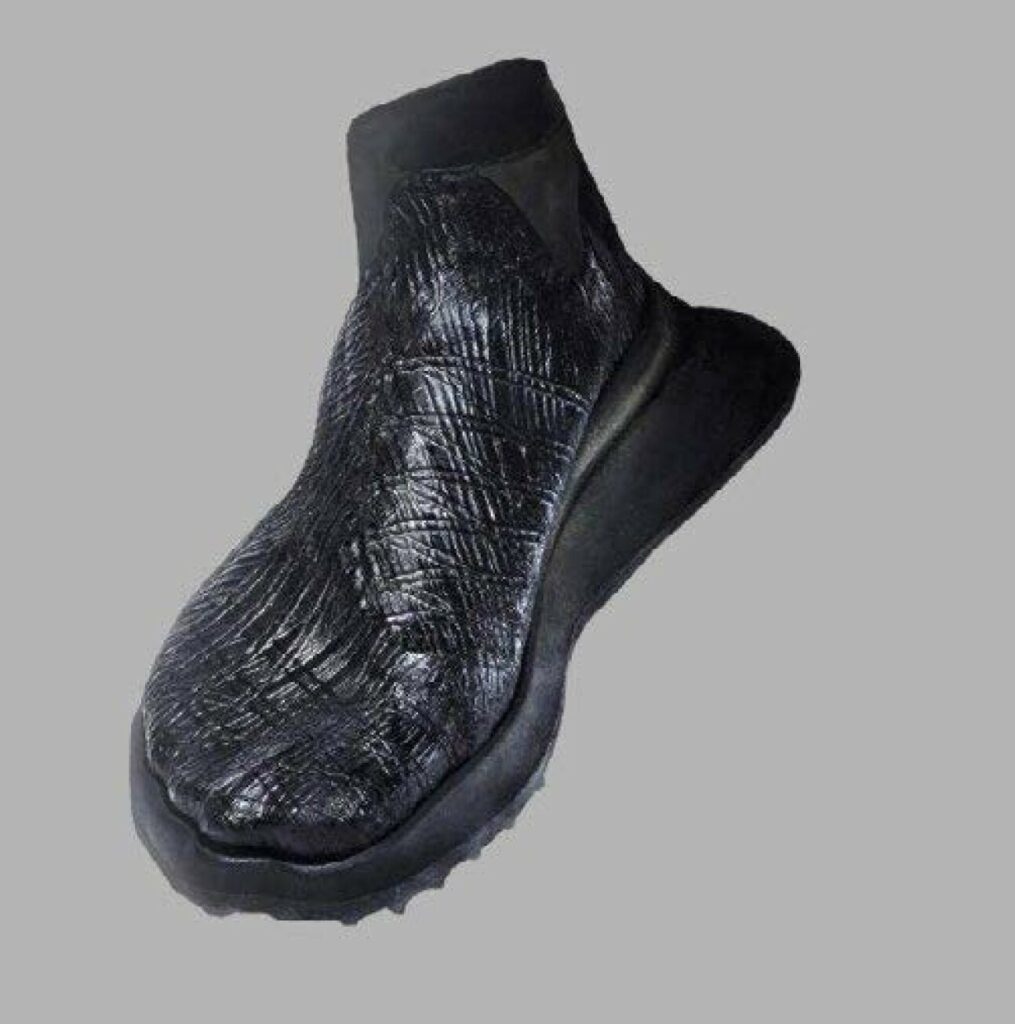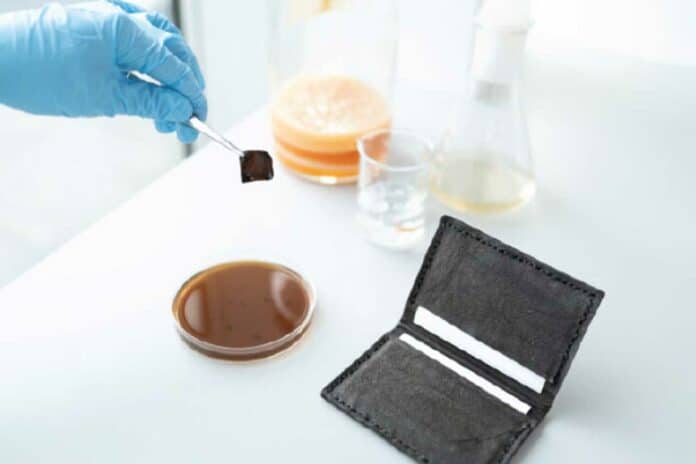Researchers at Imperial College London have created an innovative way to make leather devoid of plastic and animal exploitation. Thanks to genetically modified microbes, this leather also dyes itself—a first in the field.
The fashion industry has always relied extensively on artificial chemical dyes, which are especially hazardous when producing black leather. The Imperial team sought to use biological techniques to overcome this problem.
Their invention provides a remedy for the damage dyeing methods do to the environment. Prototypes of shoes and wallets showcasing the vegan leather that dyes itself represent a significant sustainable advancement.
This process might produce materials with a broader range of colors and patterns, providing more environmentally friendly options for materials like cashmere and cotton.
Lead author Professor Tom Ellis, from Imperial College London’s Department of Bioengineering, said: “Inventing a new, faster way to produce sustainable, self-dyed leather alternatives is a significant achievement for synthetic biology and sustainable fashion.
“Bacterial cellulose is inherently vegan, and its growth requires a tiny fraction of the carbon emissions, water, land use, and time of farming cows for leather.

“Unlike plastic-based leather alternatives, bacterial cellulose can also be made without petrochemicals and will biodegrade safely and non-toxically in the environment.”
The scientists altered the genes of a type of bacterium known for generating sheets of microbial cellulose, a flexible substance frequently employed in various sectors, to create the self-dying leather alternative. Thanks to these alterations, the bacteria synthesized eumelanin, a dark black pigment, and the cellulose material.
To show off their technique, they worked with material designer Jen Keane to use bacterial cellulose to grow the upper portion of a shoe, excluding the sole. The cellulose was grown for 14 days until it took on the correct shape in a specially designed shoe-shaped tank. Afterward, they gently shook the shoe for two days at a particular temperature to encourage the bacteria to produce black pigment, dying the fabric from within.
They also grew two sheets of cellulose, cut them to size, and sewn them together to form a black wallet.
The researchers demonstrated, in addition to the prototypes, that bacteria can be genetically modified with genes from other microbes to produce colors in response to blue light. The bacteria produce colorful proteins that shine when blue light is used to cast a pattern or logo onto the bacterial sheets.
By doing this, they can project logos and patterns onto the developing bacterial cultures, which encourages the formation of logos and patterns spontaneously inside the material.
Co-author Dr Kenneth Walker, who conducted the work at Imperial College London’s Department of Bioengineering and now works in industry, said: “Our technique works at large enough scales to create real-life products, as shown by our prototypes. We can consider aesthetics and alternative shapes, patterns, textiles, and colors from here.
“The work also shows the impact that can happen when scientists and designers work together. As current and future users of new bacteria-grown textiles, designers have a key role in championing exciting new materials and giving expert feedback to improve form, function, and the switch to sustainable fashion.”
Professor Ellis said: “Microbes are already directly addressing many of the problems of animal and plastic-based leather, and we plan to get them ready to expand into new colors, materials, and maybe patterns too.
“We look forward to working with the fashion industry to make the clothes we wear greener throughout the production line.”
Journal Reference:
- Walker, K.T., Li, I.S., Keane, J. et al. Self-pigmenting textiles grown from cellulose-producing bacteria with engineered tyrosinase expression. Nat Biotechnol (2024). DOI: 10.1038/s41587-024-02194-3
